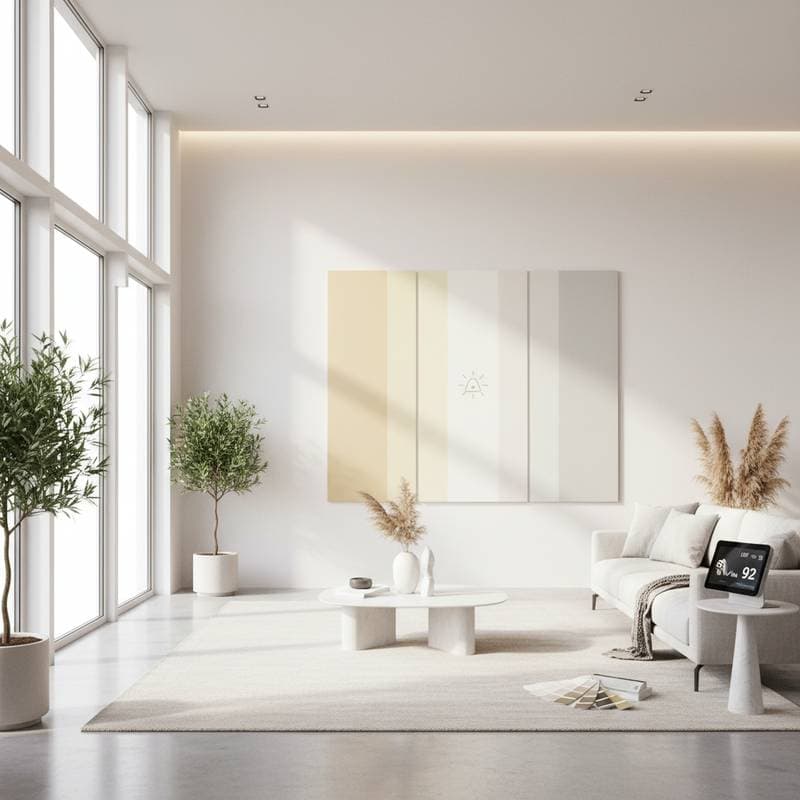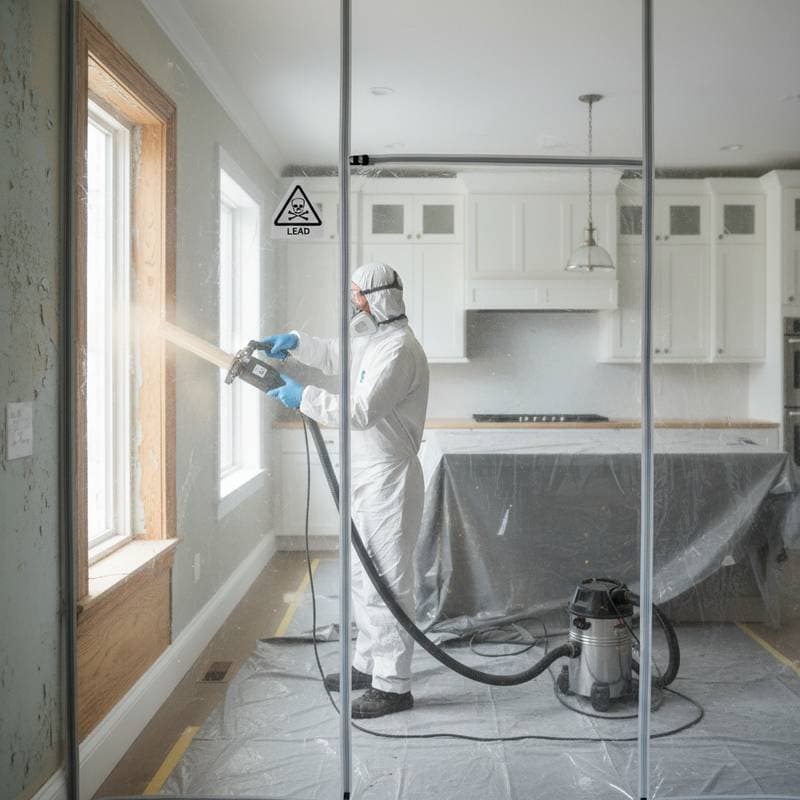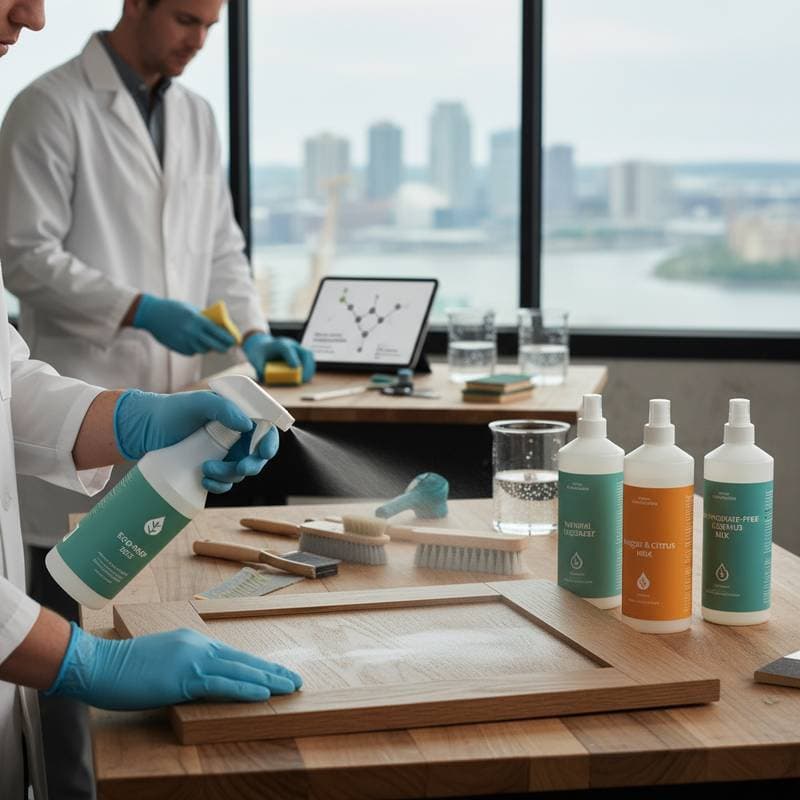Limewash Paint Doubles Home Resale Value in 2025
Limewash Paint: The Secret to Doubling Resale Value
Homeowners seeking enduring improvements to curb appeal and property value increasingly choose limewash paint. This ancient finish has reemerged as a contemporary choice for those desiring the allure of natural materials paired with an enduring aesthetic. Limewash delivers a subtle, matte surface that revitalizes interior and exterior areas alike. The result is a gentle patina that conveys sophistication without ostentation, while its mineral makeup permits the underlying brick, stone, or plaster to breathe, thereby safeguarding these materials.
Beyond visual charm, limewash yields substantial returns. Proper application enhances a home's exterior and elevates its market perception significantly. Prospective buyers link this finish to superior craftsmanship, resilience, and environmental responsibility—attributes that sway purchasing choices beyond mere cosmetic enhancements.
Project Cost Breakdown
Average Cost Ranges
- Basic project: $2,000 - $3,500 for small areas like accent walls
- Standard project: $4,000 - $6,800 covering full interiors or single-story exteriors
- Premium project: $7,000 - $10,000 for large or multi-story applications with custom features
What's Included
- Surface cleaning and preparation to eliminate dirt, prior paint layers, and debris
- Limewash mixing and tinting to produce tailored shades that harmonize with home architecture
- Professional application via brushes or sprayers to secure uniform texture and depth
- Detail finishing on edges around windows, doors, and trim for seamless integration
- Cleanup and final inspection confirming even coverage and adherence standards
What Costs Extra
- Surface repairs including mortar repointing or stucco patching to address structural issues
- Specialty pigments or precise color matching for unique design visions
- Protective topcoats suited to humid or coastal settings
- Scaffolding or elevated equipment for accessing high or multi-level surfaces
Factors That Affect Final Cost
| Factor | Cost Impact | Examples |
|---|---|---|
| Surface type | Higher for porous surfaces | Brick requires more material than smooth plaster |
| Accessibility | Moderate increase | Elevated roofs or expansive walls demand extra setup |
| Color depth | Slight increase | Deeper hues necessitate additional coats for opacity |
| Regional labor rates | Varies widely | Metropolitan areas impose premium pricing |
| Preparation needs | High impact | Stripping old coatings extends labor hours |
Why Limewash Adds Real Resale Value
Limewash paint extends beyond superficial renewal; it enhances structural integrity by promoting breathability, which averts moisture buildup that erodes masonry. Buyers value its eco-conscious profile, devoid of volatile organic compounds and inherently antimicrobial. The mineral foundation interacts with atmospheric carbon dioxide to form a durable, stone-resembling layer that fortifies with age.
In real estate terms, limewashed homes project refinement and meticulous upkeep. This finish signals thoughtful investment, bolstering buyer trust. Real estate experts observe that properties featuring limewash on brick or stucco attract elevated bids over those with standard paint or raw surfaces, especially in homes echoing classic designs.
Timeline Expectations
Project duration hinges on preparatory work and environmental factors like humidity and temperature.
- Small interior project: 2 to 3 days for accents such as fireplaces or feature walls
- Exterior single-story home: 4 to 7 days encompassing preparation through curing
- Large or multi-story property: 1 to 2 weeks to manage scale and access challenges
Initial steps involve thorough cleaning, repairs, and drying periods to prime the surface. Application proceeds in successive thin layers, each requiring 24 to 48 hours to set. Full curing, where the signature patina emerges, spans several additional days post-completion.
Professional vs. DIY Guidance
Though limewash application seems simple, attaining a flawless, sophisticated outcome demands expertise and precision. Specialists master pigment ratios, humidity control, and substrate nuances. They employ tools like badger-hair brushes attuned to limewash's distinct flow compared to acrylic alternatives.
When DIY Makes Sense
- Limited scopes such as interior accent walls or modest fireplaces
- Individuals experienced with porous masonry handling
- Basic treatments absent intricate patterns or elevations
When to Hire a Professional
- Comprehensive exterior transformations
- Preservation of historic or protected structures
- Challenging substrates like previously coated or irregular surfaces
- Scenarios prioritizing uniform color and enduring performance
Professionals guarantee optimal bonding and preserved permeability. They mitigate risks of uneven streaking, a common novice pitfall, ensuring the finish ages gracefully.
Contractor Selection
Selecting an adept contractor secures superior results and maximizes investment returns. Limewash demands niche proficiency, beyond general painting capabilities. Target specialists in masonry coatings through local directories or industry associations.
Key Steps for Selection
- Verify credentials such as active licenses, bonding, and liability insurance.
- Review portfolios focusing on limewash-specific case studies with diverse substrates.
- Obtain surface samples of proposed colors tested directly on your material.
- Evaluate bids ensuring inclusions for prep, application layers, and post-work assessment.
- Inquire on warranties covering adhesion, colorfastness, and elemental resistance.
Skilled contractors differentiate limewash from whitewash or silicate paints, guiding selections based on your home's materials and local weather patterns.
Process Preparation
Homeowners prepare by relocating nearby vegetation, furnishings, or adornments from work zones. Inspect and cleanse surfaces meticulously, repairing fissures or unstable elements. Limewash bonds optimally to bare masonry; thus, excise any glossy paints via sanding or chemical strippers.
Anticipate tonal shifts during curing as lime carbonation lightens the hue subtly. Post-application, shield from direct water exposure for 72 hours and permit ambient hardening. Experts advise biennial upkeep like soft brushing to clear accumulations, preserving vibrancy without aggressive interventions.
Quality and Maintenance Considerations
Limewash's allure stems from its dynamic evolution. It accrues organic shading and textural nuances over years, amplifying depth and authenticity. Though resilient, its semi-porous nature facilitates spot touch-ups rather than wholesale reapplication.
For longevity, apply sealants sparingly in exposed locales. Annual visual checks detect early wear, allowing timely refreshments that extend service life beyond a decade.
Planning Your Project
Embark on your limewash upgrade by assessing surface conditions and desired outcomes. Consult multiple specialists to align visions with feasible budgets and timelines. Document preferences for colors and finishes to streamline decisions. This structured approach transforms a routine refresh into a strategic enhancement that elevates both daily living and future market appeal.
Frequently Asked Questions
1. How much does limewash paint cost compared to regular paint?
Limewash incurs modestly higher expenses owing to bespoke formulations and expert execution. Conventional exterior paints span $1.50 to $3 per square foot, whereas limewash ranges from $2 to $5 per square foot. These premiums reflect intensive preparation and layered applications essential for authentic curing.
2. How long does a limewash finish last?
Expert installation yields up to 15 years of service with routine care. It integrates chemically rather than adhering superficially, resisting flaking. Gradual fading contributes to its organic appeal and invites simple rejuvenation.
3. Can I apply limewash over painted brick?
Limewash fails to grip sealed or painted substrates effectively. Prior coatings require complete removal through mechanical or solvent methods. Professionals evaluate and execute restoration to expose native masonry.
4. How do I choose the right contractor for a limewash project?
Prioritize those versed in mineral finishes over broad-spectrum painters. Demand photographic evidence of limewash endeavors, confirm coverage details, and secure three client endorsements. Ensure proposals detail every phase from priming to final safeguards.
5. What kind of maintenance does limewash require?
Upkeep remains light: occasional gentle washing with neutral solutions suffices for cleanliness. Steer clear of high-pressure tools or corrosives. Patchy areas after years respond well to targeted reapplication.
6. Does limewash increase my home’s resale value?
Indeed, limewash exteriors evoke premium quality, ecological mindfulness, and perennial elegance. Market observers confirm quicker sales and uplifted prices for such properties, positioning it as a prudent prep for market entry.



